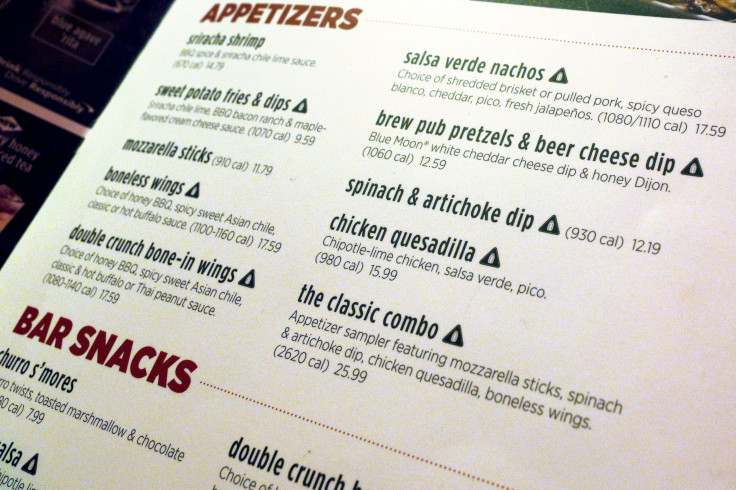Chain Restaurants In NYC Will Begin Warning Customers Of High Sodium Foods On Tuesday

Tuesday New York will become the first city in the nation to require chain restaurants place warning labels on any menu item that exceeds 2,300 milligrams of sodium, the recommended limit of salt intake per day.

According to the New York City Board of Health, the policy will affect restaurants with at least 15 locations, which amounts to 3,000 total restaurants — about one-third of all eatery traffic in the city. In advance of the Dec. 1 deadline, Applebee's began adding warning labels to its menu earlier this month, revealing most any meal consumed there would amount to a sodium-laden feast.
Sodium is the main component of salt. Consumed in excess, it can lead to high blood pressure, a risk factor of heart disease and stroke. On average, Americans consume about 3,300mg of sodium daily, well above what is considered healthy. Researchers estimate that reducing the average daily sodium intake to 2,300mg (about 1 teaspoon of salt) per day would prevent 11 million cases of hypertension each year, according to a Harvard School of Public Health article.
More dramatically, calculations in the same article suggest 99,000 heart attacks and 66,000 strokes would be prevented each year simply by cutting the average consumption by about half a teaspoon of salt each day. Ultimately, 92,000 lives would be saved each year.

Heavy-Handed Restaurant Chefs
Anyone familiar with the competitive shows on the Food Network has frequently heard contestants criticized for not using “enough” salt to suit the tastes of renowned chef-judges. Generally, restaurant chefs add much more salt to their food than home cooks. This suggests anyone who frequently eats out (and orders in) is likely placing their health at risk.
New Yorkers are far more likely to eat in restaurants than the average American, according to a 2014 Zagat survey reported in The Daily News. New Yorkers ate restaurant food for lunch or dinner 58 percent of the time compared to 47 percent of the time recorded elsewhere in the nation. For this reason, some critics believe all restaurants in New York should be forced to list total sodium content for each menu item (and not just flag high sodium foods). However, this beginner step of requiring chains place a warning sign on at least high-sodium foods should help New Yorkers begin to improve their health.
While New York City believes itself to be the front-runner in the low-sodium movement, Philadelphia deserves that title based on its Healthy Chinese Take-out Initiative launched in 2013. At that time, the City of Brotherly Love targeted the sodium content of some Chinese take-out dishes to prevent high blood pressure in low-income neighborhoods. Two years later, a Department of Health data brief finds the restaurants involved in this project have continued to use less salt (instead of falling back on old ways after a few months passed). More importantly, customers are generally happy with the changes and most didn't even notice a difference.



























